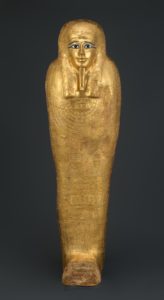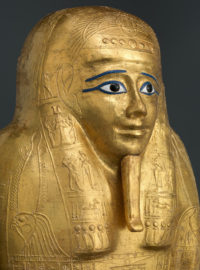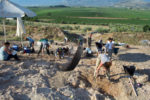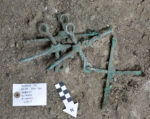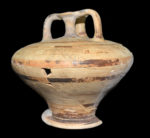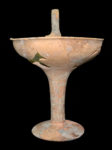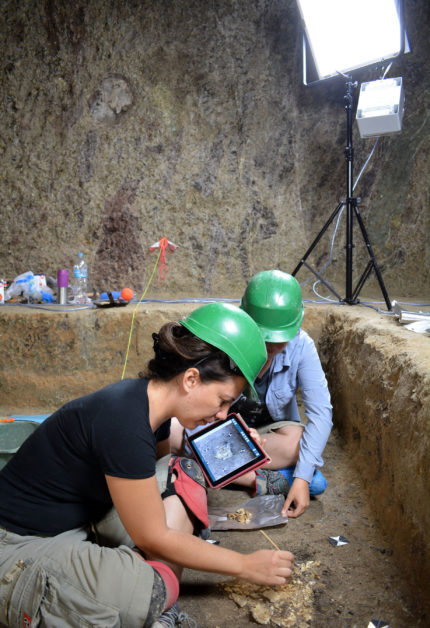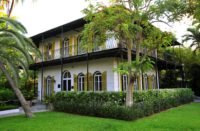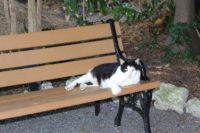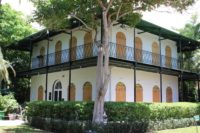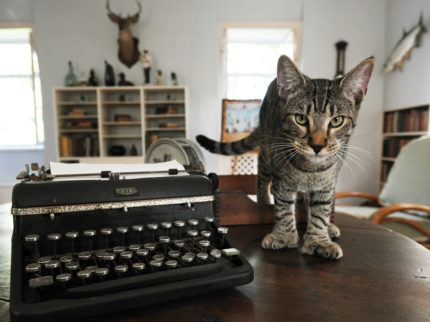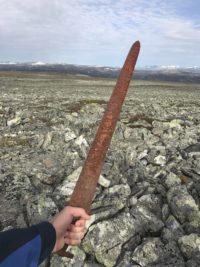 A group of reindeer hunters discovered a Viking sword last month while stalking the mountains of Lesja in Oppland, south central Norway. Einar Ambakk found the three-foot-long sword nestled between rocks on August 23rd at more than a mile in altitude. The sword was embedded hilt-down in the gaps between stones. Half of the blade jutted up above the rocks. Einar saw it first and, not even recognizing that it was a sword, placed both his hands on each side of it and lifted it up. Only when he’d pulled it all the way out did he realize he, like a young and confused Once and Future King, had just drawn a sword from the stone.
A group of reindeer hunters discovered a Viking sword last month while stalking the mountains of Lesja in Oppland, south central Norway. Einar Ambakk found the three-foot-long sword nestled between rocks on August 23rd at more than a mile in altitude. The sword was embedded hilt-down in the gaps between stones. Half of the blade jutted up above the rocks. Einar saw it first and, not even recognizing that it was a sword, placed both his hands on each side of it and lifted it up. Only when he’d pulled it all the way out did he realize he, like a young and confused Once and Future King, had just drawn a sword from the stone.
The hunters reported their discovery to the municipality. Experts examined the weapon and determined it dates to the Viking era, around 850-950 A.D., and is exceptionally well-preserved. The sword’s fine condition and high-altitude location 1,640 meters above sea level generated much excitement. Two glacier archaeologists from Secrets of the Ice, a metal detectorist and a local archaeologist went to the find spot with the reindeer hunters to explore it further.
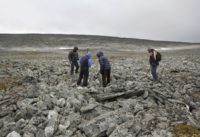 They were fortunate to be able to find the precise place. The hunters didn’t record the GPS coordinates, but the pictures Einar Ambakk took of the sword had geolocation data enabled, so the team was able to use that information to identify the exact find spot even in the stark mountainous terrain which doesn’t have much in the way of landmarks to help guide them. Even if there had been some peculiar rock formation or other fortuitously identifiable feature, it could only have provided a general search area. The sword selfies made a full and accurate archaeological investigation of the specific site possible, something that was not an option, for example, when a hiker discovered an earlier Viking sword 300 miles southwest of Lesja in 2015.
They were fortunate to be able to find the precise place. The hunters didn’t record the GPS coordinates, but the pictures Einar Ambakk took of the sword had geolocation data enabled, so the team was able to use that information to identify the exact find spot even in the stark mountainous terrain which doesn’t have much in the way of landmarks to help guide them. Even if there had been some peculiar rock formation or other fortuitously identifiable feature, it could only have provided a general search area. The sword selfies made a full and accurate archaeological investigation of the specific site possible, something that was not an option, for example, when a hiker discovered an earlier Viking sword 300 miles southwest of Lesja in 2015.
They found no other artifacts with a 20 meter area of the find. This is significant because if the sword had been schlepped up the mountain by someone who met their end leaving the sword as mute witness to his final days, the team would probably have discovered the remains of other equipment even though the organic materials (including the body and clothing) had rotted away. There is no evidence of ritual weapon sacrifice, a nearby burial, or anything else that might explain the sword’s location.
Nor is there evidence on the sword and in the context of the find to indicate the sword was hidden below the surface and only recently shifted into view due to the movement of the stones in the permafrost. No scratches, no dents, no dings, no bending, at least one of which you’d expect to find had the sword recently been put through a stone wringer. Archaeologists think Einar Ambakk found it pretty much in its original position, perhaps a little lower from sliding down into the crack between the stones.

It may seem strange for the sword to have survived on the surface for more than one thousand years. However, to all appearances this is what happened here. Isolated finds of well-preserved iron arrowheads are also known from the high mountains, and some of these artefacts are even older than the sword. The preservation is probably due to a combination of the quality of the iron, the high altitude and the mostly cold conditions. For most of the year, the find spot would have been frozen over and covered in snow.
The sword would most likely have had bone, wood or leather covering the grip, but the organic parts are no longer preserved.
 Because a Viking’s sword was likely his most prized possession, it wouldn’t have just been abandoned or forgotten during a mountain-top jaunt. Not that the find site is ideally suited as a walking trail. The rocky terrain would have been treacherous and there was a well-established path nearby without any such obstacles. It’s possible the owner of the sword got lost in the white-out of a blizzard and died, but, as the glacier archaeologists point out, if that were the case, then where is the rest of his gear? You don’t climb a mile up a mountain carrying only a sword.
Because a Viking’s sword was likely his most prized possession, it wouldn’t have just been abandoned or forgotten during a mountain-top jaunt. Not that the find site is ideally suited as a walking trail. The rocky terrain would have been treacherous and there was a well-established path nearby without any such obstacles. It’s possible the owner of the sword got lost in the white-out of a blizzard and died, but, as the glacier archaeologists point out, if that were the case, then where is the rest of his gear? You don’t climb a mile up a mountain carrying only a sword.
The sword is now at the Museum of Cultural History in Oslo where it will be studied further and conserved.
